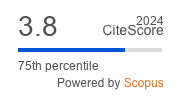Article | Open Access
Landscape as a Potential Key Concept in Urban Environmental Planning: The Case of Poland
| Views: | 2146 | | | Downloads: | 1569 |
Abstract: Rapid urban development increases the consumption of materials, energy, and water, resulting in an overproduction of waste and emissions. These cause many environmental threats, such as ozone layer depletion and rain acidification, leading to climate change. Therefore, the question arises on how to improve the effectiveness of tools that strengthen environmental protection. This discursive article presents an approach stressing the role of landscape in environmental protection in Poland. It indicates that landscape protection is an ecological, not just an aesthetic activity, as it is often considered in Poland. The landscape reflects all changes occurring in individual elements of the environment resulting from urban development. Through landscape transformations, one can track the growth and accumulation of adverse effects in the chain of environmental changes. Knowledge regarding the dynamics and scope of these transformations can improve ecological design and technologies. Therefore, the landscape condition should be treated as an indicator of sustainable development. If so, one could hypothesise that effective landscape protection contributes to minimising environmental and climate changes. The relationships between the landscape and environmental/climate threats discussed in this article prompt combining some tools related to these threats, which may ensure both effective landscape protection and sustainable development, leading to reduced climate change. The possibilities and benefits of integrating these tools are presented here as well. General considerations are supplemented with references to the situation in Poland to support the need for implementing a more policy-oriented and interdisciplinary approach to landscape protection.
Keywords: climate change; combining tools; environmental impacts; landscape protection; Poland; urban development
Supplementary Files:
Published:
© Aleksandra Sas-Bojarska. This is an open access article distributed under the terms of the Creative Commons Attribution 4.0 license (http://creativecommons.org/licenses/by/4.0), which permits any use, distribution, and reproduction of the work without further permission provided the original author(s) and source are credited.


